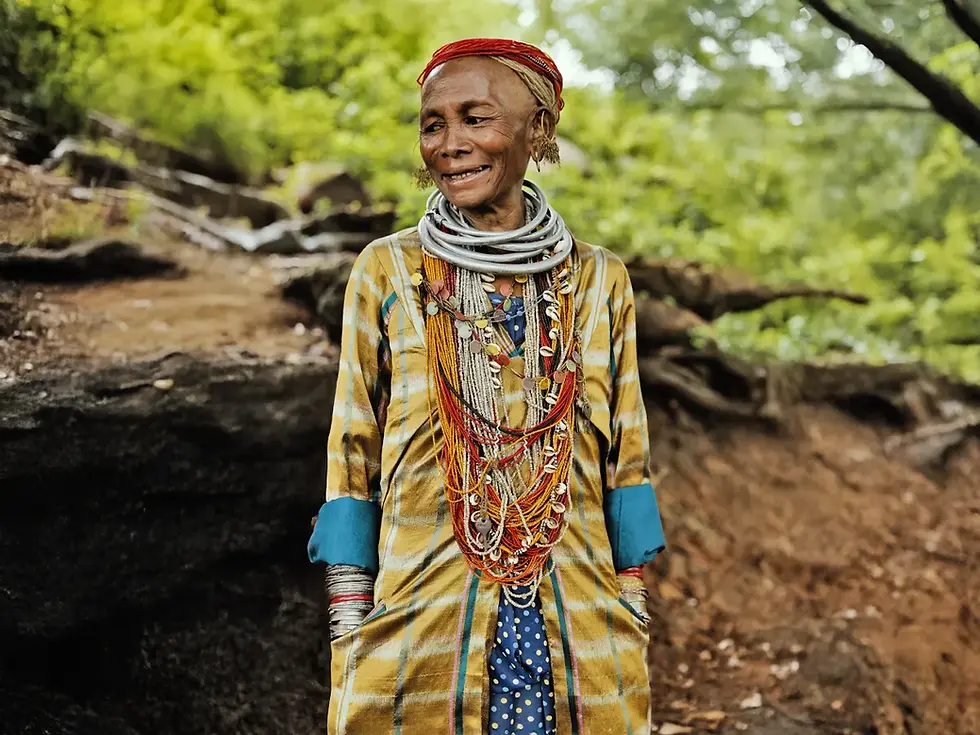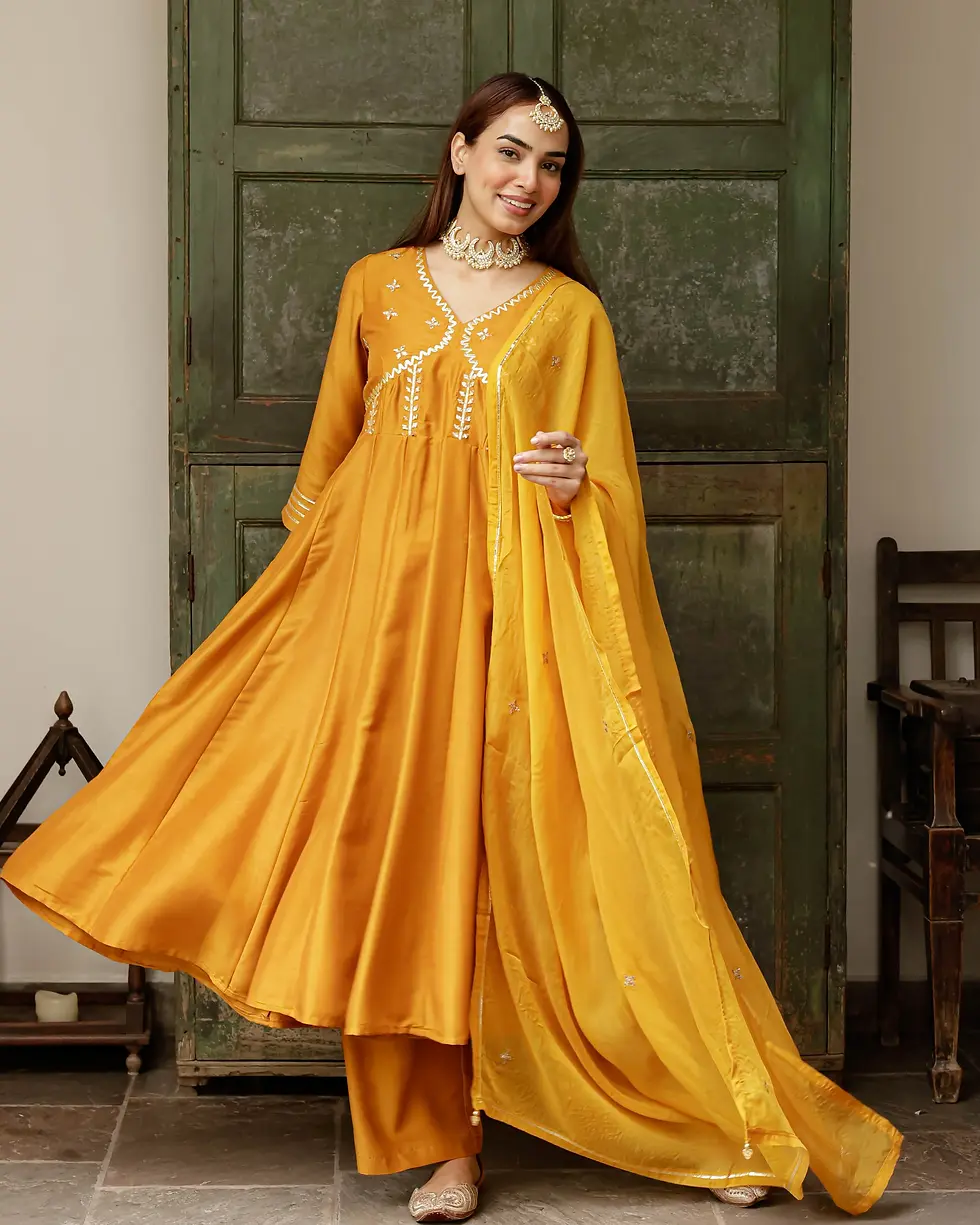Regional Indian Crafts Meet Global Runways: Why Heritage Textiles Are Making a Comeback
- Crossrr
- Sep 12
- 4 min read
Fashion is cyclical. Right now, the world is turning back to its roots—celebrating heritage, indigenous crafts, and the stories woven into every thread. In India, regional textiles and traditional crafts are no longer just cultural relics; they’re being reimagined, revived, and showcased on global runways. From sustainable fabrics to artisan-led design, here's why Indian heritage textiles are enjoying a major comeback—and which brands are leading the way.
1. The Drivers Behind the Revival
a) Sustainability & Eco-Conscious Choices
Consumers globally are demanding ethical fashion, transparency, and reduced environmental impact. Indian heritage crafts—handloom, natural dyes, artisanal weaving—align inherently with slow fashion values. For example, revival of kala cotton from Gujarat’s Kutch region shows how indigenous, pesticide-free fabrics are being embraced.
b) Authenticity & Craftsmanship
In a world awash with mass-produced garments, authenticity stands out. Each region in India has its own distinctive weaving techniques (jamdani, ikat, hand-block printing, Chikankari, Kalamkari etc.), patterns, and story. These crafts express community identity, generational skill, and cultural history.
c) Globalization with Local Roots
Designers and fashion houses (both Indian and international) are recognising the appeal of rooted aesthetics with global usability. Traditional weaves are being used in luxury collections, streetwear, and fusion fashion. Global runway shows are featuring Indian textiles, and international brands are collaborating or sourcing from Indian craftspeople.
d) Policy Support & Rising Artisan Pride
There is increased awareness (both public and private) about preserving crafts, supporting artisans, fair trade, and ensuring artisan livelihoods. Also, events like handicraft expos, craft competitions, and government or NGO initiatives are contributing.
2. What “Heritage Textiles” Means
Heritage textiles are more than just “old styles.” They include:
Handwoven fabrics: Jamdani, Banarasi silk, Kanchipuram, Bomkai, Muga, etc.
Natural dyes & traditional methods: Using plant-based dyes, eco-printing, etc.
Regional embroidery & motifs: Chikankari from Lucknow, block prints from Rajasthan, Puan from Mizoram, etc.
Slow fashion ethos: Small batch production, fair wages, sustainable processes.
These elements are being adapted in modern silhouettes so they appeal to global consumers who want style + story.
3. Examples from Global Runways & Luxury Fashion
Many international luxury brands are integrating Indian textiles:
Burberry used Maheshwari silk, a handloom fabric from Madhya Pradesh, for trench coats.
Valentino uses Pashmina wool (from Kashmir) in winter collections.
Louis Vuitton has pieces inspired by or incorporating Indian saree drapes and rich silk textures.
These are powerful signals that Indian crafts are not just for ethnic wear—they are influencing global fashion aesthetics.
4. Brands in India Working at This Intersection
Here are several brands that are doing remarkable work in reviving regional crafts and blending them with contemporary design and sustainability:
Boito: Founded by Richa Maheshwari, Boito uses tribal and handwoven textiles of Odisha (Bomkai, Khandua, Kapdaganda, Pipili etc.) and transforms them into luxury outerwear (coats, jackets, kimonos) with ethical production.

Lovebirds: Merging traditional Indian techniques with minimalist modern silhouettes. Focuses on sustainable fabrics, clean wearable designs. Has grown recognition both in India & internationally.

Kiniho: From Meghalaya; works with motifs inspired by local folklore, traditional weaves, and ensures comfort + regional identity in their designs. Responsible creation is central.

Label Lêlen: Based in Mizoram; reimagines the ‘puan’ (traditional wrap) using eco-friendly yarn (like bamboo fibre) with modern forms.

Oro Bruk: From Arunachal Pradesh; reviving Monpa clothing, yak wool, adapting thickness and design for modern climates and use.

Gulachin: Jharkhand-based, using tribal woven textiles; bold prints, strong geometry derived from local art. Emphasis on conscious practices.

Bunaai: Jaipur-based; transforms Rajasthani textile techniques like hand-block print, Dabu, Chikankari, etc., into everyday and festive wear. Balances heritage with affordability and style.

Péro (Aneeth Arora): Designs that intentionally use handcrafted textile work; less predictable shapes, imperfect finishes, celebrating human hand in every stitch.

5. Trends That Are Defining the Movement
Slow Fashion: valuing time, craft, sustainability over fast turnover.
Artisan-Craftsmanship: emphasizing hand made, detail, and craft narrative.
Heritage Weaves / Heritage Textiles: naming specific regional styles (jamdani, lochi, kalamkari, handloom).
Natural & Organic Fabrics: organic cotton, natural dye, banana fibre, bamboo, Muga and Eri silks.
Ethical Fashion: fair trade, artisan welfare, transparency in supply chain.
Cultural Identity & Storytelling: every piece has a story—the village, the weaver, the technique.
Design Innovation & Fusion: blending heritage crafts with streetwear, western cuts, global wearability.
6. Challenges & What Needs to Happen for Long-Term Growth
Scaling without compromising quality: Maintaining handwork, unique imperfections, artisan skill while increasing production is difficult but necessary for reaching wider markets.
Fair compensation & artisan welfare: Many craftspeople are underpaid. Ensuring sustainable livelihoods is key.
Intellectual property & cultural appropriation: When global brands use Indian crafts, crediting origin, paying fair licensing, collaborating ethically is crucial. Misappropriation leads to backlash.
Consumer education: Many global buyers need to understand why heritage textiles cost more, why handloom vs. machine made matter, etc.
7. What This Means for Global Runways & Markets
Runway shows (e.g., Paris, Milan, New York, London) are increasingly featuring Indian artisans or Indian textiles—either in designer collections or via collaborations.
Retail customers are showing preference for conscious wardrobes, where statements aren’t just about style but also values.
Fashion weeks in India (Lakmé, Amazon India Fashion Week) are putting spotlight on labels that merge heritage and sustainability.
Exports of heritage fabrics are rising; international luxury houses are sourcing directly from Indian artisan clusters.
8. What You, the Consumer, Can Do
Look for labels that reveal their supply chain, show artisan stories.
Favor clothing with natural fibres, organic dyes, handwoven fabrics, over fast fashion.
Choose quality over quantity: buy fewer pieces that are crafted well; these often last longer physically and aesthetically.
Support regional crafts by exploring lesser-known weaves: find saris, scarves, jackets made in small clusters.












Comments